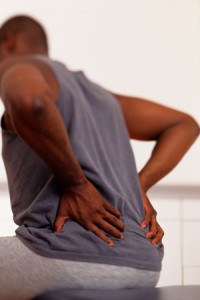 A recent study found that relief from low-back pain is correlated with reduced postural sway. The research involved patients with non-specific low back pain, and is believed to be the first study to investigate the association between altered pain levels and postural sway.
A recent study found that relief from low-back pain is correlated with reduced postural sway. The research involved patients with non-specific low back pain, and is believed to be the first study to investigate the association between altered pain levels and postural sway.
The study involved 38 patients with non-specific lower back pain and 38 healthy patients. Throughout the course of the study, patients received three manual interventions such as manipulation or soft tissue techniques at 3-4 day intervals, at which point postural sway was measured. The researchers measured postural sway as the participants stood on a firm surface with their eyes closed. Researchers also assessed perceived pain intensity on a numerical scale.
All participants experienced pain relief over the course of the study. All but two also exhibited lower postural sway velocities. Reduction in self-reported pain intensity was seen to be closely correlated to reductions in postural sway. The researchers conclude that sway measures appear to be a clinically useful tool for monitoring treatment and rehabilitation. The study also confirms the efficacy of manual therapies for improving postural sway and pain symptoms in patients with low-back pain.
Reference
Ruhe A, Fejar R, and Walker B. Pain relief is associated with decreasing postural sway in patients with non-specific low back pain. Musculoskeletal Disorder 2012; 13(39): doi:10.1186/1471-2474-13-39.